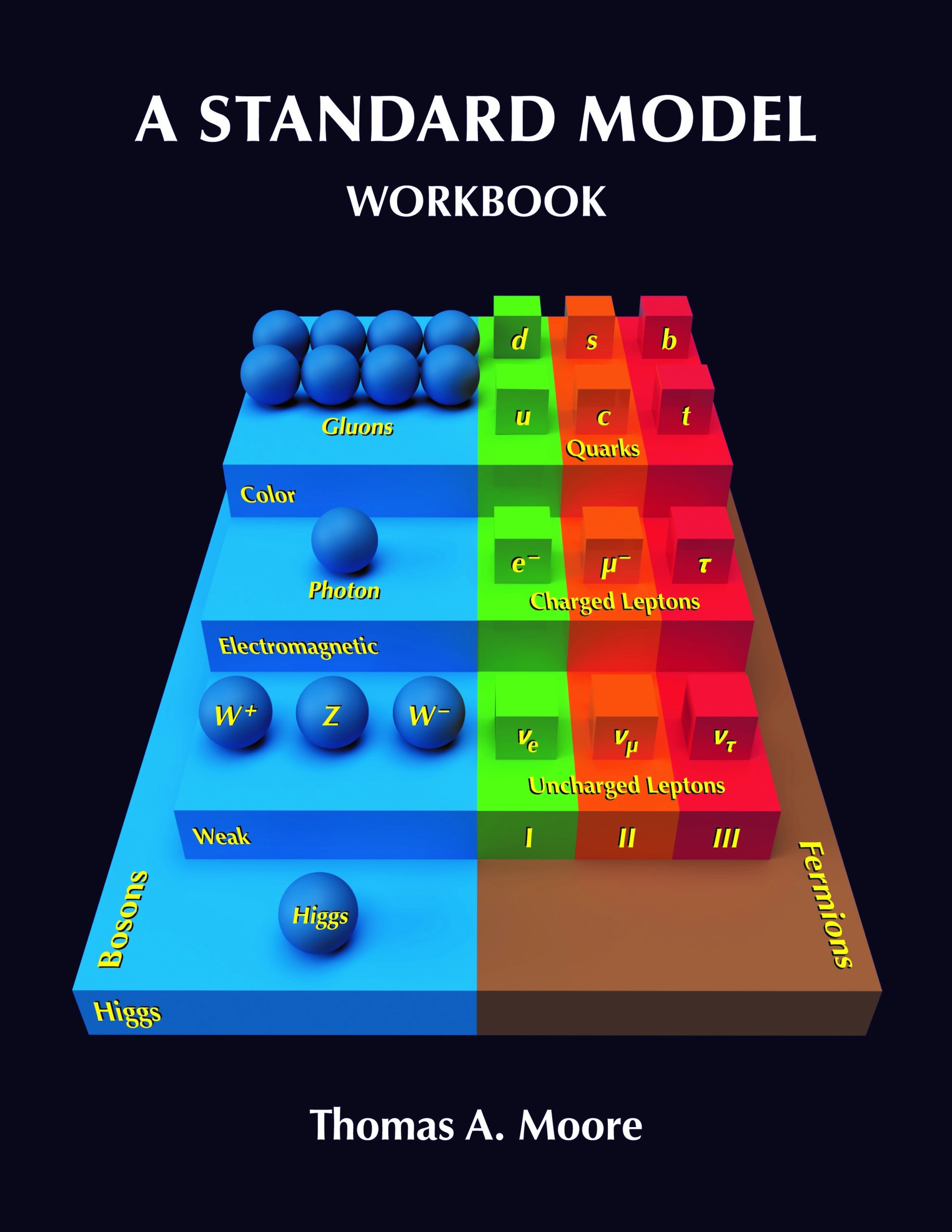
A Standard Model Workbook
Newly Released
“I found this textbook to be a delightful overview of particle physics for an undergraduate course.”
- Jonas Mureika, Loyola Marymount University
This introduction to the Standard Model of particle physics provides students with a classroom-tested workbook to optimize learning this material in student-centered classes. Developed to support a one-semester upper-level undergraduate or graduate course, it includes hundreds of homework problems that will guide students to a clear understanding of this fascinating field.
Summary
A Standard Model Workbook provides upper-level undergraduates a one-semester introduction to the Standard Model of particle physics. Its classroom-tested workbook design offers multiple paths through the material, consisting of short chapters that provide an overview of a topic followed by opportunities for students to work out the details for themselves, concluding with homework problems to further develop students’ understanding of the concepts. This allows students to truly own the materials by working through it and allows instructors to construct an active, student-centered class.
Topics include a review of special relativity and quantum mechanics; the Lagrangian mechanics of fields; some basic quantum field theory; Feynman diagrams; solutions to the Dirac equation; the U(1), SU(2), and SU(3) symmetries and their implications for electrodynamics; the electroweak theory and quantum chromodynamics; renormalization; the Higgs mechanism; fermion and neutrino masses; experimental tests and applications of the Standard Model; and a look at possibilities beyond the Standard Model. The book is designed to offer multiple paths through the material so that instructors can choose what to emphasize. A detailed Instructor’s Manual is available for this text.
Resources
An Interview with Author Tom Moore
Errata
Resources for Adopting Professors
Table of Contents
Preface
Chapter 1. Introduction
Section I. Relativity
Chapter 2. Special Relativity
Chapter 3. Index Notation
Section II. Classical Fields
Chapter 4. A Classical Scalar Field
Chapter 5. The Klein-Gordon Equation
Chapter 6. Noether’s Theorem
Section III. Quantum Mechanics
Chapter 7. Basic Quantum Mechanics
Chapter 8. Operators and Time Evolution
Chapter 9. Angular Momentum
Shortcut to 15
Chapter 10. Feynman Diagram Quick Start
Section IV. Quantum Field Theory
Chapter 11. Creation and Annihilation Operators
Chapter 12. The Quantized Scalar Field
Chapter 13. Interactions and Feynman Diagrams
Section V. Connection to Experiment
Chapter 14. Fermi’s Golden Rule
Chapter 15. Toy Universe Predictions
Section VI. Spin – ½ Particles
Chapter 16. The Dirac Equation
Chapter 17. Transforming Dirac Spinors
Chapter 18. Quantizing the Dirac Field
Section VII. The Electroweak Theory
Chapter 19. Electromagnetism from U(1)
Chapter 20. Quantum Electrodynamics
Chapter 21. Renormalization
Chapter 22. Applications of QED
Chapter 23. The Weak Interaction from SU(2)
Chapter 24. The Weak Interaction’s Leftist Bias
Chapter 25. The Unified Electroweak Theory
Section VIII. Particle Masses
Chapter 26. The Higgs Mechanism
Chapter 27. Fermion Masses and Mixing
Chapter 28. Neutrino Masses and Mixing
Chapter 29. Applications of the Electroweak Theory
Section IX. Chromodynamics
Chapter 30. Chromodynamics from SU(3)
Chapter 31. Applications of QCD
Section X. And Beyond!
Chapter 32. Beyond the Standard Model
Appendix
Appendix A. Potentials From Interactions
Index
Reviews
“Moore blends clear and efficient prose with well-chosen exercises that are an essential part of the exposition, helping students build both fluency with the concepts and facility with the calculations. This workbook guides the student from first steps to the sort of mastery through computation that is prized by working physicists.”
-William Loinaz, Amherst College
“I found this textbook to be a delightful overview of particle physics for an undergraduate course. Moore clearly understands his student audience and their capabilities / limitations, and tunes the pacing and parceling of the material accordingly.”
-Jonas Mureika, Loyola Marymount University

